There are over 200 recognised breeds of chicken around the World but not all hens are equal in their laying ability so if you would like chickens for eggs, look at my top 10 laying hens below first. It is commonly accepted that all chickens decended from the Jungle Fowl. Pure breeds of chicken have been developed over many hundreds, even thousands of years from the Jungle Fowl (although science is still challenged by the Auraucana that lays blue eggs).
A Little History of Laying Hens
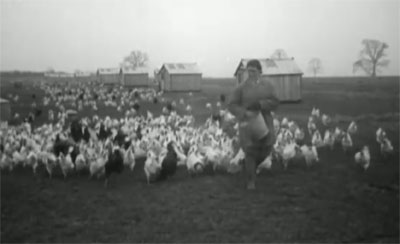 Before the First World War, ducks were the better egg layers and chicken breeds that layed 100 eggs or more per year were considered good layers. Most of the development of pure bred laying hens came after the Second World War when there were many laying trials and tests and it was common for breeders to ‘trap nest’ hens to record their individual output so that they could be used to produce further generations of laying hens.
Before the First World War, ducks were the better egg layers and chicken breeds that layed 100 eggs or more per year were considered good layers. Most of the development of pure bred laying hens came after the Second World War when there were many laying trials and tests and it was common for breeders to ‘trap nest’ hens to record their individual output so that they could be used to produce further generations of laying hens.
Development of the ‘Hybrid’
The developments with pure breeds were soon to be followed by hybrid (a cross of pure breeds) laying hens. There were millions of pounds spent during the 1950’s on creating hybrids that were not only capable of laying more eggs but also had a good feed conversion.
During this development, the parent flocks that created these hybrid layers were becoming a different ‘strain’ of their own because hens were selected for egg production rather than the way they looked.
Interestingly, duck eggs could have been on our breakfast table rather than chickens eggs… but they did not do well kept in confined conditions like chickens.
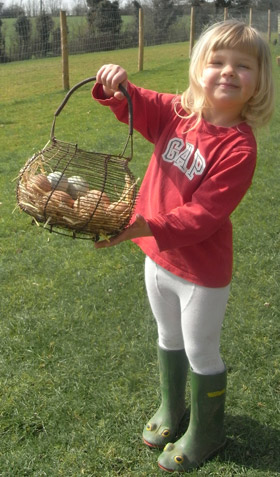 My Top 10 Chickens for Eggs
My Top 10 Chickens for Eggs
The following table lists my top 10 laying hens (a mixture of hybrids and pure breeds) and gives an estimate of the number of eggs they are capable of producing if kept in the right conditions.
Note that there are many different strains of hens from different breeders that will perform differently… egg numbers can vary on a number of other factors too, particularly with feeding and daylight levels.
Exhibition strains that have been closely bred are not usually selected for their egg laying performance. Try to purchase hens from a good ‘Utility Strain’. There are some breeders that advertise utility strains and the number of eggs they expect from their strain every year.
Hybrids are much more reliable at producing a given number of eggs and are bred mainly for this purpose.
1. Goldline (Hybrid)
The ultimate egg machine. This little commercial brown hen will lay up to 320 large brown eggs in her first year. They have a good feed ratio and are very similar to the birds used on farms to produce eggs for the consumer market. A very friendly bird that will be in your house if the door is left open!
2. White Leghorn (Pure Breed)
Small attractive birds with a good feed efficiency that lay up to 300 large white eggs in their first year. These are the standard commercial hen used in the U.S. for egg production (because white eggs are preferred). They can be quite flighty and can fly well so make sure they can be kept securely before you buy them or clip a wing to keep them on the ground.
3. Nera (Hybrid)
Hardy birds that are great foragers and layers of a good quality large brown egg. The Nera is a cross between a certain strains of Rhode Island Red and Barred Plymouth Rock, originating in Scotland. You can expect around 270 eggs in their first year.
4. Amber (Hybrid)
The Amber is a Rhode Island Red based hybrid that looks attractive and has very soft feathering. She is a fantastic layer of up to 300 medium eggs in her first year.
5. Speckledy (Hybrid)
The Speckledy is a flecked dark hen, a cross of a Rhode Island Red and Marans. She lays around 270 large dark brown eggs in her first year.
6. Rhode Island Red (Pure Breed)
The Rhode Island Red is a good layer of up to 220 large brown eggs in their first year. Be sure to get a utility strain though as these are a popular show bird.
7. Marans (Pure Breed)
Good layers of medium to large dark brown eggs. Copper Black Marans seem to be the best layers laying up to 200 eggs in a year. They are often good winter layers, with pullets coming into lay during January.
8. Light Sussex (Pure Breed)
Attractive birds that will reward you with up to 200 medium tinted eggs.
9. Araucana (Pure Breed)
Araucanas are very unique looking. They initially came from Chile in South America. The Araucana lays around 200 medium sized blue to bluish-green
10. Crested Cream Legbar (Pure Breed)
An attractive hen with a small crest that will lay up to 180 medium sized blue to bluish-green eggs that will add a little colour to your egg boxes.

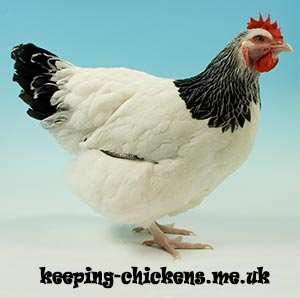

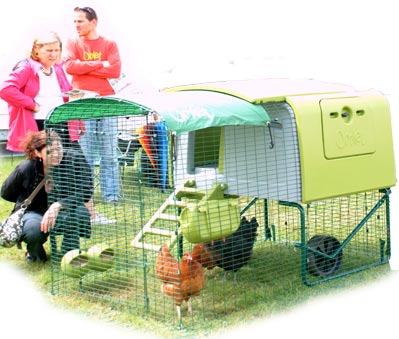
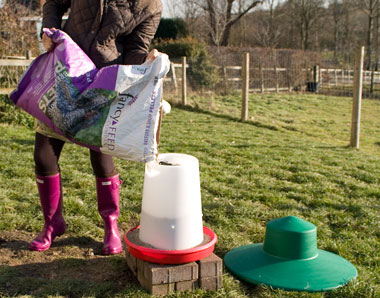

A couple of questions:
can you mix the above to get best layers (hybrid) but also help to keep rarer breeds (eg Araucana?) going
If first year gives a max of x eggs, how quickly/over how many years, does this yield drop.
Any advice appreciated, I’m about to get into this for the first time…ta
Ta…
Yes, you can mix and match although they will need introducing gradually and need to sort out the pecking order.
Normally the rule of thumb is 10% reduction in eggs per year, however it does vary between breeds.
Hello,
I have kept 4 Warren hybrid’s in our small back garden a few years ago and our family enjoyed these lots. We haven’t got these any more and to be honest our back garden was not really big enough for them and a family of 5 – I like them to be free range and poo was too plentiful! I am now considering getting 2 or 4 bantams. I have young boys and would like a breed which is sociable and lays eggs.
Could you advise me? I have looked at the Poultry website but it does not go into the character of the birds. So far I have come up with the Silkie and the Wyandotte.
I have just discovered your website and it is great!
Have you looked at poultrykeeper.com Breeds of Chickens page?
You will find that the temprament depends on the strain of the birds and the way they are brought up and handled. Pekin Bantams are a popular choice as well as bantam Orpingtons.
Tubs of mealworms will soon make you some friends 🙂
hi, can you use hybrid hens eggs to make a bantam broody i know a broody is not good but thats how i hatch my chicks.
Hybrids are the least likely to go broody since they are usually bred for high egg production which means broodiness is bred out of them (they don’t have the time to stop laying!)
this was really helpfull thank you!
Hi, I have 4 hens, 2 bovan nera, one sussex and a blue one. They stopped laying eggs 3 months ago, why is this.
#
There are lots of reasons why chickens stop laying eggs including sickness / disease but if they seem healthy, I would recommend you read Chickens stopped laying eggs on the poultrykeeper site which covers most of the main reasons.
Hi, We have been offered 5 Isa brown hens, they are 2 years old, how long should they lay for yet ? Is it worth taking them. Many thanks.
They will contine to lay but will be past their best. It’s hard to say how well they will lay and for how long. Usually egg quality decreases (thinner shells and more watery whites) and they decrease in numbers by about 10% per year. Hens usually live to 5 years or so.